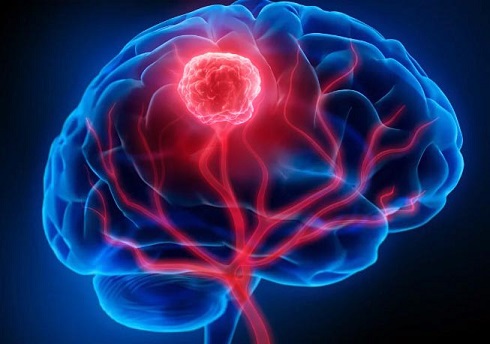Nikhil Prasad Fact checked by:Thailand Medical News Jul 21, 2024 1 year, 5 months, 1 week, 1 hour, 28 minutes ago
Cancer Updates: Glioblastoma, the most aggressive type of malignant brain tumor, has long posed a significant challenge for medical researchers. Despite various treatment options, the prognosis for patients with glioblastoma remains poor. However, recent studies from the Medical University of South Carolina-USA and Memorial Sloan Kettering Cancer Center-USA offer a glimmer of hope. This
Cancer Updates news report delves into the promising therapeutic intervention that targets sphingolipid signaling and complement activation in glioblastoma.
 A new promising treatment protocol for aggressive type of malignant brain tumor
Understanding Glioblastoma
A new promising treatment protocol for aggressive type of malignant brain tumor
Understanding Glioblastoma
Glioblastoma, also known as glioblastoma multiforme (GBM), accounts for approximately 49% of all malignant brain tumors. It primarily arises as a grade 4 tumor and is most prevalent in older adults, particularly men. Patients typically experience intense headaches, seizures, and cognitive impairments due to the tumor's aggressive nature.
Traditional treatment for glioblastoma involves surgical resection, followed by radiation and chemotherapy. Despite these aggressive treatments, recurrence is common, necessitating the exploration of new therapeutic avenues.
The Role of Sphingolipids in Glioblastoma
Sphingolipids are essential components of cell membranes and play a crucial role in cellular functions, including cell growth and death. In glioblastoma, sphingolipid metabolism is often altered, leading to tumor progression and resistance to therapy.
Ceramides, a type of sphingolipid, are known to induce cancer cell death. However, glioblastoma cells often convert ceramides into sphingosine-1-phosphate (S1P), a molecule that promotes tumor survival. Researchers have discovered that the balance between ceramides and S1P is crucial in determining the fate of glioblastoma cells.
Complement Activation in Tumor Progression
The complement system, a part of the immune system, plays a vital role in identifying and eliminating pathogens. However, in glioblastoma, components of the complement system can be hijacked by tumor cells to promote their survival and growth.
Studies have shown that glioblastoma tumors exhibit local complement activation, with high levels of complement proteins such as C3 and C5. These proteins can promote tumor growth and metastasis through various signaling pathways.
Targeting Sphingolipid and Complement Pathways
Combining therapies that target both sphingolipid metabolism and complement activation could provide a new approach to treating glioblastoma. Researchers suggest that inhibiting the conversion of ceramides to S1P, while simultaneously blocking complement activation, could suppress tumor growth and enhance patient survival.
Promising Therapeutic Agents
Several therapeutic agents targeting sphingolipid metabolism and the complement system are current
ly being explored. Fingolimod (FTY720), an FDA-approved drug for multiple sclerosis, acts as an antagonist for S1P receptors. In glioblastoma, Fingolimod has shown potential in reducing tumor progression by inducing cancer cell death and preventing immune cell migration.
Complement inhibitors, such as APL-9 and AMY-101, which block central complement activation pathways, are also being studied. Combining these inhibitors with sphingolipid-targeting drugs could offer a synergistic effect, enhancing their therapeutic efficacy.
Recent Findings and Future Directions
Recent studies have highlighted the crosstalk between sphingolipid metabolism and complement activation in promoting glioblastoma survival. For instance, the S1P-S1PR1 signaling pathway has been shown to activate complement proteins, which in turn promote tumor metastasis.
Researchers are now focusing on developing combination therapies that target both pathways. Inhibiting enzymes involved in sphingolipid metabolism, such as sphingosine kinases, along with complement inhibitors, could provide a more comprehensive treatment strategy.
Conclusion
This promising research offers new hope for glioblastoma patients. By targeting both sphingolipid signaling and complement activation, researchers aim to develop more effective therapies that could significantly improve patient outcomes.
The study findings were published in the peer-reviewed journal: BioChem
https://www.mdpi.com/2673-6411/4/2/7
For the latest
Cancer Updates, keep on logging to Thailand Medical News.
Read Also:
https://www.thailandmedical.news/news/university-of-mississippi-study-shows-that-juice-of-the-cornelian-cherry-can-help-with-glioblastoma
https://www.thailandmedical.news/news/metformin-shows-potential-as-an-angiogenic-supplemental-adjuvant-for-glioblastoma-treatment
